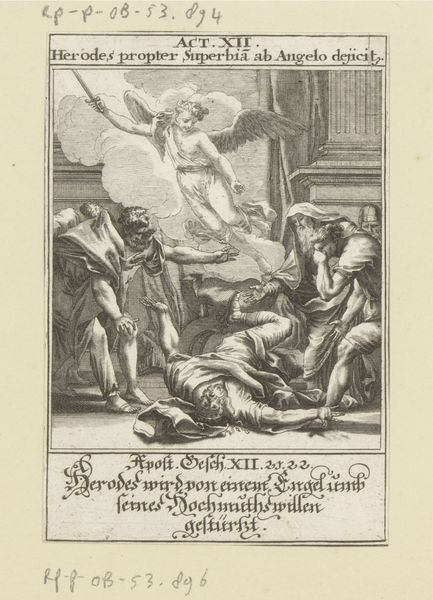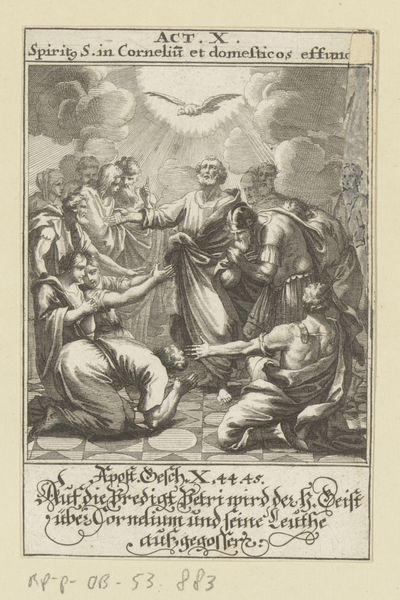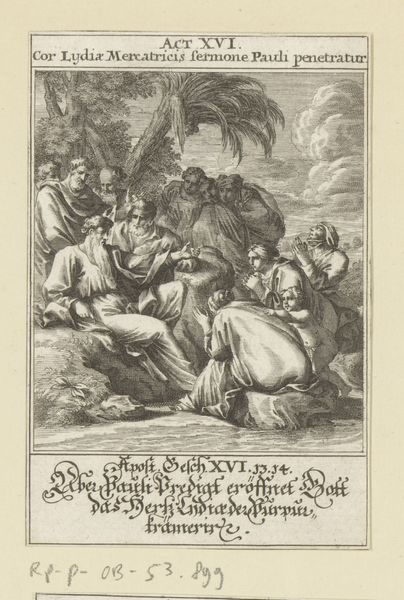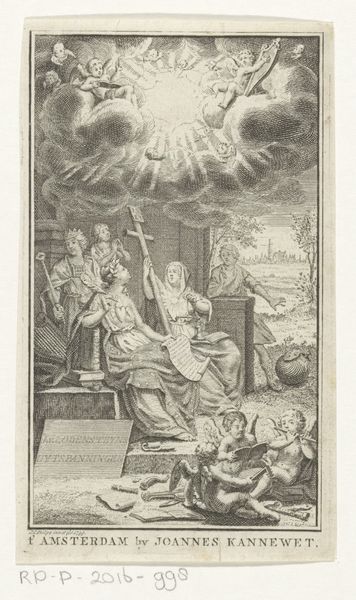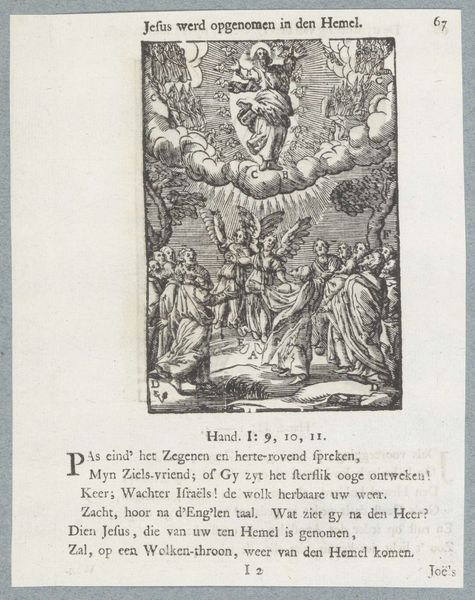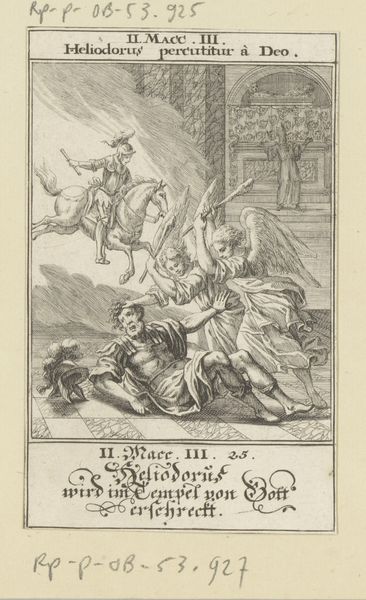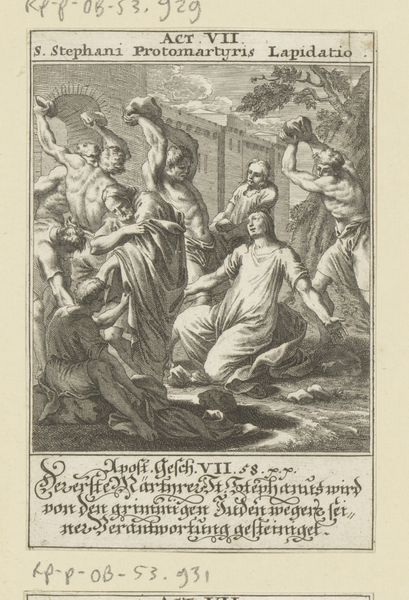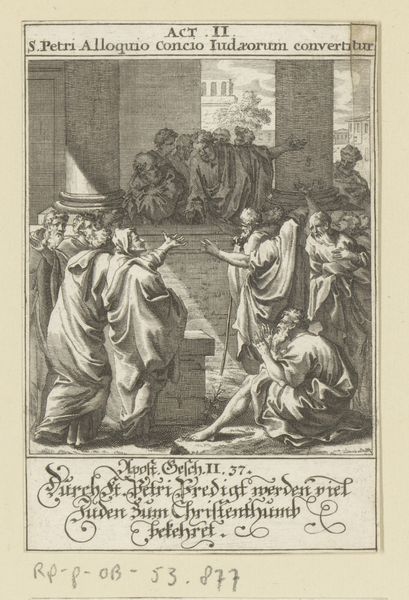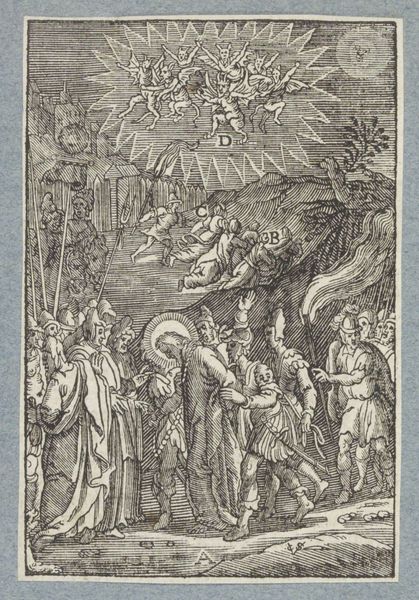
print, engraving
#
baroque
# print
#
pen illustration
#
figuration
#
line
#
history-painting
#
engraving
Dimensions: height 121 mm, width 80 mm
Copyright: Rijks Museum: Open Domain
This small print, "Uitstorting van de Heilige Geest," was made anonymously, and its fine lines were achieved through a meticulous process of engraving. The making of engravings like this one was highly skilled and labor-intensive. An image is incised into a metal plate, traditionally copper, using a tool called a burin. The plate is then inked, and the surface wiped clean, leaving ink only in the engraved lines. Finally, paper is pressed against the plate, transferring the image. The clarity and precision you see here speak to the engraver's dexterity and control. Engravings were a key technology for disseminating images widely and quickly. As such, it played a vital role in spreading not only religious narratives, as we see here, but also scientific knowledge, political ideas, and commercial information. This simple print embodies a complex intersection of craft, technology, and social context. It is more than just an image; it’s a product of skilled labor and a vehicle for cultural exchange.
Comments
No comments
Be the first to comment and join the conversation on the ultimate creative platform.

